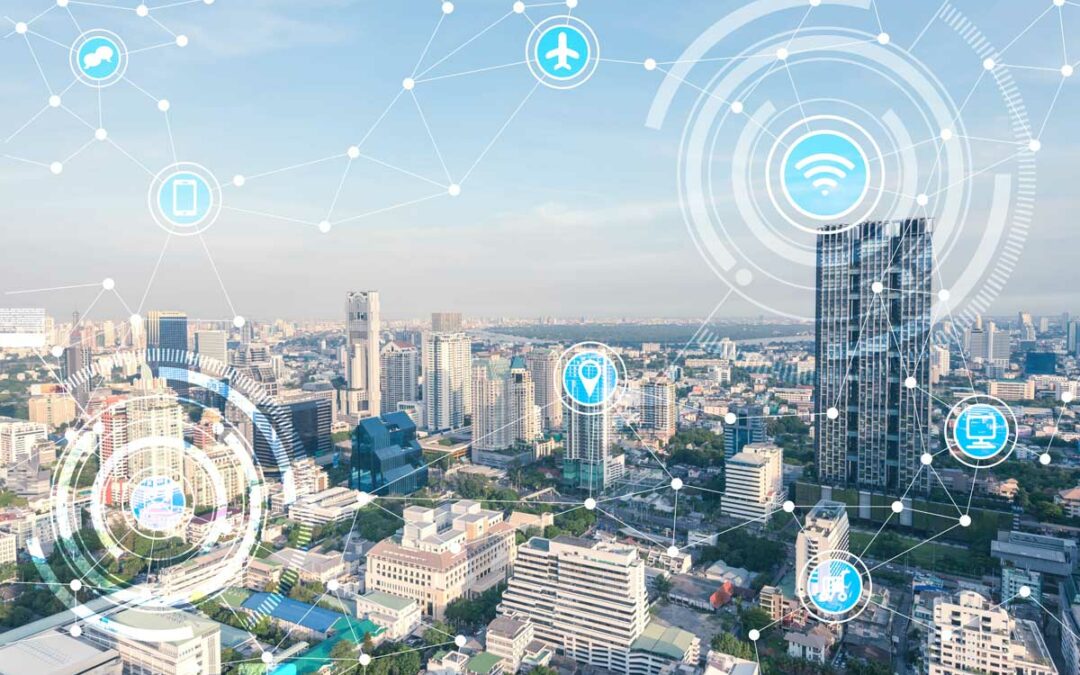Smart cities or smart cities are booming all over the world and are providing more and more
welfare of its citizens as this is its main function. Currently, more than half of the population
The world's population lives in urban areas, and by 2050 this figure is expected to rise to two-thirds of the total.
Cities consume 75% of the energy generated and generate 80% of greenhouse gases.
greenhouse, sustainable development of cities is increasingly dependent on how the urban environment is managed.
urban space.
This urban development aims at the sustainability of the city without compromising the city's needs.
and institutions.
What is a smart city?
Smart cities facilitate mobility, improve social or water services, all at the same time.
through new technologies. The big data and the IoT help to achieve its main objectives
objectives: to reduce the carbon footprint, reduce energy consumption and ensure the well-being of its stakeholders.
citizens.
Like smart buildings, cities collect patterns and data from users to improve their
becoming an information network that uses new technologies to provide information and information to
intercommunicating the various services it offers. The economy, mobility, the environment, and the
The administration of these cities are intimately linked through technology with the
to exploit its resources to the maximum.
The interaction of citizens with cities is of great importance, as they have at their disposal the following tools
as applications to optimize the use they make of the environment, to know the quality of the air, the times
of urban transport or help with garbage collection.
Garbage collection is one of the examples of improvement in this type of cities.
management applications can send alerts when the containers are full and these alerts can be sent to
If they are intelligent, they automatically send the data to the waste management companies, in order to
In this way, collection is scheduled according to actual needs. Another example is
The protagonist is the inhabitants' cell phone, which becomes their driver's license and driver's license card.
mobile identification which streamlines and simplifies government services.
Smart cities in Spain
The Juniper Research report: Smart Cities: Key Technologies, Environmental Impact & Market
Forecasts 2022-2026 placed Barcelona in third place in the world ranking of Smart cities.
Based on data collection, Barcelona has improved its public transportation network, creating a
much more efficient orthogonal bus network. This network, which uses Barcelona's urban sprawl for
The system is also improving the ease of use, the connection with other means of transportation, the frequency of
pace or speed of travel.
Another example is the case of the intelligent traffic lights that have been installed in Barcelona for years.
These change their indicator to green when ambulances or emergency services are approaching.
clearing its path.
Juniper Research's ranking is based on the evaluation of different aspects of the city, which are
include transportation and its infrastructure, energy, technology and urban connectivity. The top
leads the way in the city of Shangay. Asian cities, thanks to the common and rapid deployment of platforms
and the efficient and digitized management of public services, have been able to scale up to the
first positions in the ranking.
The cities of the future are built by enabling connections and interactions that facilitate the use of the
sustainable use of shared resources.
They are yet another example of how technology and artificial intelligence at our fingertips can be used for
improve the quality of life of citizens and combat climate change in the region.
our localities.

